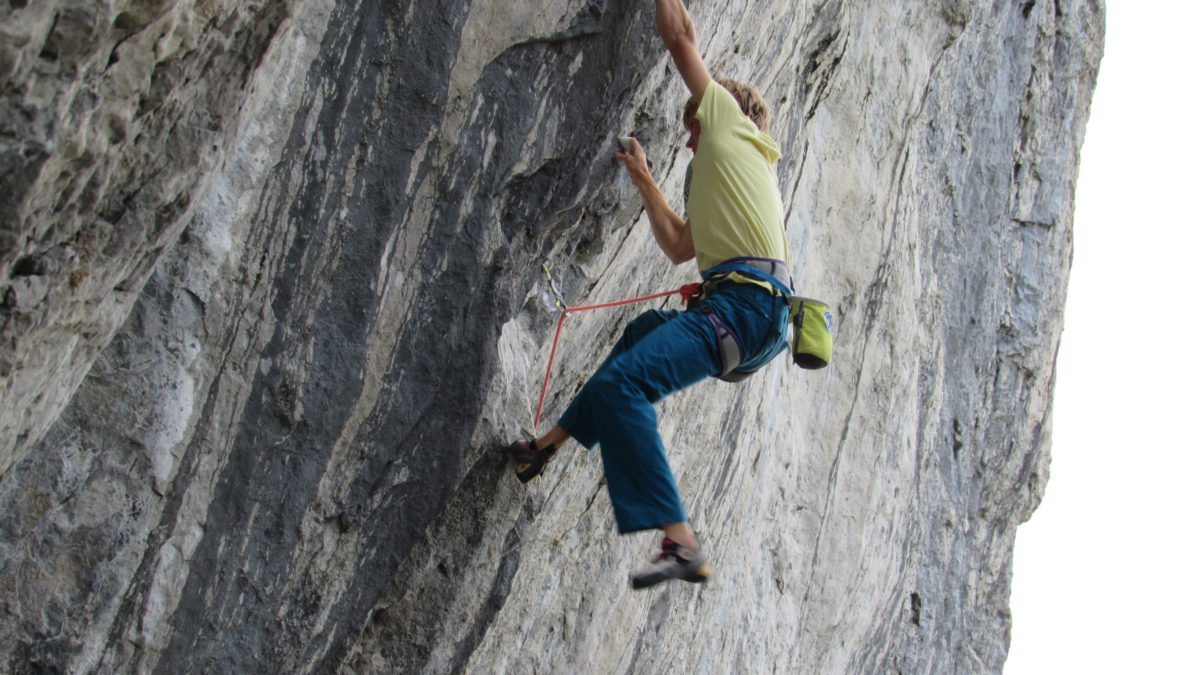Five Things to Know About Canadian Sport Climbing
A series of climbing 101's about the history, people, routes and gear that shaped the sport

There’s a lot of things to know about Canadian sport climbing, like where the first bolts were used and who established the first 5.14.
In Canada, we have two types of bolted routes: multi-pitch and sport. Multi-pitch routes that are bolted aren’t always considered sport climbing because they might involve difficult route finding, big run outs, objective hazards, complicated descents and big wall-style rope techniques.
Whereas sport climbing is often single pitch, well protected and focuses more on difficulty then adventure. Sport climbing in Canada started in the late 1970s, but it really took off in the 1980s and ’90s. Here are just a few things to know about Canadian sport climbing.
Bolts Replace Trad
During the early 1980s, a number of gear routes in Canada were retrobolted. Wicked Gravity at Back of the Lake in Alberta was a classic gear route when it was bolted, as were a number of other routes at the famous crag.
In Ontario, Moby Fly 5.11c at Cow Crag had been climbed using trad gear, but was bolted in 1983. The limestone on the Niagara Escarpment was difficult to protect using the available gear of the day. The retrobolted trad routes from the early 1980s have gone on to become classics.
Many of the limestone trad routes from the 1960s and 1970s across Canada were protected with pitons that were often left in place. Over the years, it’s became the norm to replace rusty pitons with solid bolts. Popular examples of this can be found in the Rockies on Yamnuska, Mount Louis and Ha Ling Peak.
Of course, trad climbing in Canada is as popular as ever and standards continue to be pushed at crags and in the alpine.

Pulse
Jim Sandford was leading the way for hard sport climbing in the late 1980s. He set new standards with Second Nature 5.12d and Animal Instinct 5.13a at Petrifying Wall in 1990.
In 1991, he made the first ascent of the esthetic Eurasian Eyes 5.13b in the Bulletheads on The Chief. By 1995, he’d established some of the best hard climbs in Squamish and would set the standard again that summer with the first ascent of Pulse, Canada’s first 5.14a.
The Cheakamus Canyon climb has become one of the most sought-after sport climbs in B.C. with many top climbers repeating it over the years, including Sonnie Trotter and Alannah Yip.
Sonnie Trotter and Forever Expired
Sonnie Trotter was one of Canada’s first 5.14 climbers. He travelled across the country climbing the hardest sport routes before adding his own.
In 2003, he completed a hard line on the limestone cliffs of Lion’s Head in Ontario. Forever Expired is “by far the steepest climb I’ve done anywhere,” he said after his send. “It overhangs like 75 feet in 110 feet of climbing, with a completely horizontal roof for 35 feet.”
He said the crux comes about 35 feet from the ground: an 11-move boulder problem with three mono moves ending with a five-foot sideways lunge off a pinky stuffed into a tiny hole. “I reckon it’s about V12,” Trotter said. “I had to skip two crucial clips in order to link through it.” Trotter spent 10 days working the route compared with eight days to climb Necessary Evil 5.14c in Arizona.
Forever Expired has never been repeated and is suggested to be 5.14d. Trotter returned to Lion’s Head in 2018 and made the second ascent of Atlas Shrugged 5.14a.
Fight Club
In 2016, Alex Megos visited the Canadian Rockies for his first time. As one of the world’s strongest climbers with sends to 5.15c, Megos was on the hunt for a route that could become Canada’s first 5.15a or harder.
He found his project at Ravens Crag near the town of Banff. An old project led to a steep prow. After a few weeks of projecting the limestone crimp-fest, Megos made the first ascent of Fight Club, which he graded 5.15b.
In 2018, Adam Ondra visited the Rockies and attempted to repeat Fight Club, but couldn’t piece it together during his trip. However, Ondra added his own 5.15b at Acephale called Disbelief.
Annie Chouinard
Quebec climber Annie Chouinard has been amassing one of the most impressive lists of sends of any Canadian sport climber over the past few years.
Just this fall, she climbed her first 5.14c with a send of Pure Imagination at Red River Gorge. It’s the most difficult grade ever climbed by a Canadian woman and puts her in the top tier of strong Climbers north of the border.
At her home crag in Orford National Park in Quebec, she’s noted that she’s made the first female ascents of: Come On 5.14a, Sha Sha 5.14a, Scorecard 5.13d, Alpha Zeta 5.13d, Taxe Carbonique 5.13d and many more.
The Future
Despite having a relatively short season because of the number of cold months, Canada’s sport climbing scene continues to grow with more crags being established from coast to coast to coast.
There are countless projects on steep rock features that will surely prove to be among some of the most difficult routes in the country. The number of young climbers discovering what Canada’s crags have to offer seems to be growing at an exponential rate.


